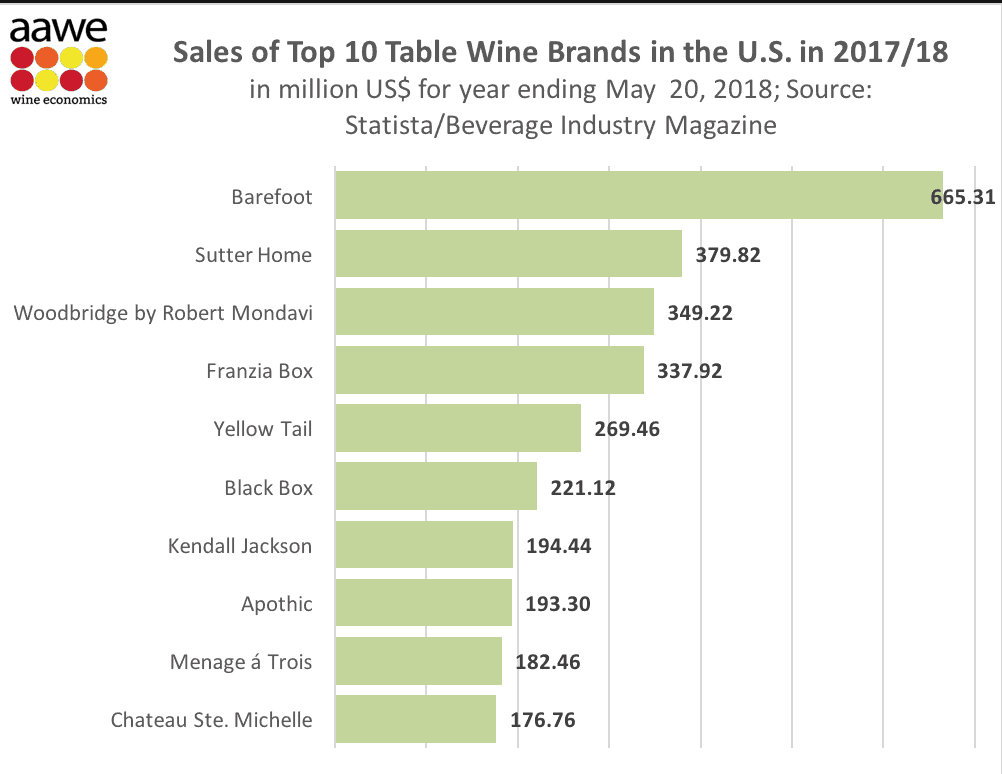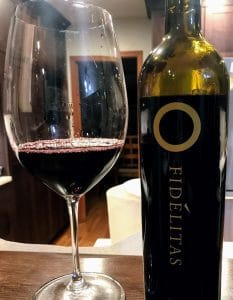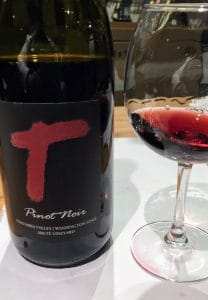This morning wine writer Jamie Goode offered some sage advice to wine regions across the globe.
Tip for wine regions worldwide: try not to market yourself through your cheapest, least impressive wine. It doesn’t tend to end well.
— Jamie Goode (@jamiegoode) October 25, 2018
I’m not sure what prompted this particular dictum but reading it reminded me of Brand Australia’s wine marketing woes. People got so use to seeing cheap, cheerful “critter wine” flooding the market from down under that the idea of Australia making premium, high-quality wine almost became a non-entity.
Which kind of puts a damper on the 2400+ Australian wineries not named Yellow Tail, Jacob’s Creek, Lindeman, Black Opal or Wolf Blass, doesn’t it?
In the huge shadow of the “Yellow Tail” effect, Australian wines today only command around 1% of the premium export market in the US. In contrast, 95% of Australian wines in the US retail for around $8 per bottle.
And both numbers may be shrinking.
While Australia is seeing some positive growth in export value to markets in Asia and Canada, it was recently announced that exports to the US has declined by $27 million in value.
It seems that Americans are getting a bit bored of the critters. The novelty of criminals has piqued some interest but that too will inevitably wane. Plus, gimmick labels like 19 Crimes certainly aren’t doing much to burnish the image of Australian wine for consumers.
Catch Up Marketing?
In response to the decline, the trade organization Wine Australia has invested $4.2 million to promote premium Australian wines. They’re spending a good chunk of that money rehabbing the image of Australia wines abroad.
This past July, they hosted several Master Sommeliers, Masters of Wine, wine buyers and media personalities at Lake Tahoe for an event called Australia Decanted. Featuring high-quality producers like Tyrrells, Penfolds, Vasse Felix, Clonakilla, Yalumba, John Duval Wines and Shaw & Smith Wines, the conference highlighted the people and terroir that often get overlooked by American consumers.
Next October, the Wine Bloggers Conference will be in the Hunter Valley of New South Wales–the first time the conference has been held outside of North America. Undoubtedly, a huge focus of that conference will be giving bloggers and other wine industry folks a chance to experience the world of Australian wines beyond Riverland and Riverina.
Are We Repeating The Same Mistake In Washington?
Here in Washington State, Jamie Goode’s warning is also pretty timely. Recently the American Association of Wine Economists (AAWE) published the “Top 10 Table Wine Brands” in the US by dollars.
You have the usual suspects of bulk California supermarket brands (and Yellow Tail, of course) but look at who is rounding out the top 10 with almost $177 million in sales.
Chateau Ste. Michelle.
Now being a bit of a Washington State-homer, I will be quick to point out something important. The quality of CSM wines are head and shoulders above the Barefoot, Sutter Home, Franzia and Yellow Tails of the world. While it is clear that the owners of Ste. Michelle Wine Estates are ambitious about expanding their portfolio with new labels and acquisitions, I take comfort in knowing that we’ll likely never see a bourbon barrel-age or cold brew hybrid wine coming out of Woodinville anytime soon.
In some ways, you could say that Chateau Ste. Michelle’s inclusion on this list is a good thing. Could this be a glimmer of hope that more Americans are drinking just a little bit better?
Perhaps. But there is a lot about this chart that gives reasons for pause.
Who Writes The Narrative Of “Brand Washington”?
Even if the quality of their wines are higher than entry-level wines from California, Australia and elsewhere, the overwhelming dominance of CSM wines in distribution still means that the banner of “Brand Washington” is being led by our entry-level wines.
Walk into any supermarket and look for Washington wine with multiple facings on the shelf. While Constellation’s Hogue or Gallo’s Covey Run ($5-6) might be there, chances are you will find only Chateau Ste. Michelle’s Columbia Valley ($6-10) label.
Or you may find one of CSM’s many, many, many sister brands like Columbia Crest Two Vines ($5-6), Grand Estates ($7-10), 14 Hands ($7-10), Snoqualmie ($6-8), Red Diamond ($6-8) or their 1.5L bulk brand Stimson Lane ($9-10).
Outside of Washington State, these may be the only Washington wines that consumers are exposed to–the state’s cheapest. Even within Washington, it’s near impossible to go into a grocery store or look at a wine list without being overwhelmed with “choices” of multiple different Ste. Michelle Wine Estates brands.
Again, the quality of these wines are undoubtedly higher than Apothic or Menage a Trois. However, the narrative of “Brand Washington” being told to consumers is still being written by just one company–and with its cheapest wines.
Has Trickle Up Marketing Ever Worked?
Even if the narrative is much more “impressive” and slightly less cheap than the story of Yellow Tail or other entry-level wines that Jamie Goode is warning about, there is still risk to the Washington State wine industry in letting the entire branding of the state be made by one dominant brand.
Has there ever been a wine region where “Trickle Up” marketing has worked? Has an industry that first introduced itself to consumers with their lowest, entry-level wine ever been able to successfully rise above that initial perception?
Inflation aside, was Napa Valley ever known for its $6-10 wines? Oregon? Bordeaux? Burgundy?
It’s almost like we’re expecting an upside down “halo effect”. We’re hoping that our bottom priced wines “trickle up” and lead the way. When what we should be doing is having our top quality, premium wines dictate our narrative to consumers
Again, has that ever worked?
Maybe Washington State will be the one to break the mold. If Chateau Ste. Michelle is our “bottom”, that is certainly a step above many other regions.
But there is a lesson we should learn from the pratfalls of other wine industries. Once the die of your brand has been cast in the minds of consumers, it’s really hard to recast.




 A few quick thoughts on the 2009
A few quick thoughts on the 2009 





 A few quick thoughts on the 2015
A few quick thoughts on the 2015 